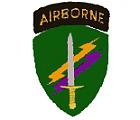...Defense News obtained a draft version of the report...
Key changes Rumsfeld will ask lawmakers to enact include:
*Extending F-22 production through 2010 with a multiyear acquisition contract.
*Speeding up Littoral Combat Ship program.
*Increasing special operations forces by 15 percent.
*Establishing a special operations unmanned aerial vehicle (UAV) squadron under the Air Force.
*Increasing Navy SEAL and riverine warfare capabilities.
*Increasing psychological operations and civil affairs units by 33 percent, or 3,700 troops...
The QDR suggests force structure changes to help wage “long-duration unconventional warfare, counterterrorism, counterinsurgency, and military support for stabilization and reconstruction efforts.” It reasserts that the military should be able to fight simultaneous wars, but also stresses the need to integrate other U.S. agencies and friendly governments.
The report says conventional ground forces should take on tasks currently performed by special operations forces, and will receive more training in foreign languages and culture. The aim will be to develop “future warriors who will be as proficient in irregular operations, including counterinsurgency and stabilization operations, as they are in high-intensity combat.”...







Bookmarks